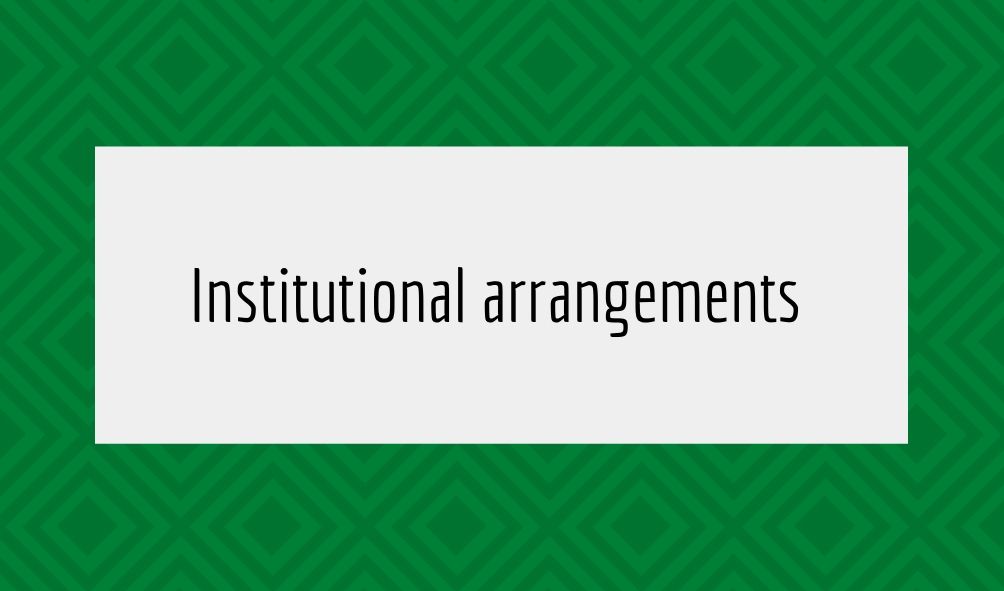
You are kindly invited to use the table of content on your right to navigate.
The RIA or Review of Institutional Arrangements is a structured process for assessing the capacity of VET actors to implement the specific measures assigned to them, which are outlined in the formal Vision and Roadmap for VET Reform. A wide range of issues can prevent an actor from fulfilling their given role in the implementation of the VET reform agenda. The required work may fall outside the scope of their normal activities, or existing legislation might prevent work from starting or going ahead. Actors may require an official mandate to carry out certain tasks. They may need access to resources which are in fact unavailable or ‘off-budget’. They may lack the know-how or experience needed to plan the work and implement it in collaboration with other actors. Issues such as these may not be evident at the time of developing the vision and roadmap, and if they remain undetected they will stay hidden until the moment they become material and block the progress of reform. Carrying out an RIA ensures that most if not all barriers to the implementation of reforms will be detected. By doing so in parallel with the vision-building and roadmapping process, the RIA findings and its recommended measures to remove barriers to the implementation of reforms can be included in the roadmap and action plan as a set of additional enabling measures to be budgeted for and financed as part of the overall comprehensive VET reform package.
Ideally, the RIA is the second of three pillars in the overall approach to reform advocated by the ETF.
-
The first pillar is the building of a shared vision and the development of a roadmap and action plan.
-
The second pillar is the RIA, which assesses the feasibility of the action plan and suggests the addition of new measures to improve the capacity of the VET system to realise the vision by implementing the complete roadmap for reforms.
-
The third step is the system for monitoring progress in the implementation of the roadmap, based on a system of indicators and targets, as well as on the assignment of responsibility to lead institutions and their collaborators, as identified in the roadmap and action plan.
The execution of the RIA is carried out under the leadership of the central government authorities responsible for VET reform. The methodology is described in a Guide provided as part of the ETF VET Governance Toolkit. The process is a collaborative effort, involving officials from central government and experts, which places great emphasis on engagement with stakeholders, usually the very institutions whose capabilities are being assessed. The RIA applies the basic principles of good VET governance and employs best practice in CHANGE MANAGEMENT applied to large-scale comprehensive reform process.
The ETF has accompanied many of its partner countries in the implementation of the RIA process. This experience forms the foundations for the RIA guide, which provides the context and motivation for the RIA process as well as a model for how to implement it. It further outlines the guiding principles for the model and relies on the insights of those acting in the context of VET reform to adapt it to the specificities of the case in hand.
The case of Serbia provides a good example of the implementation of this methodology in that it closely follows the canonical process outlined in the guide. It is interesting to note however that a second RIA was employed two years or so after the reform process was launched. This mini-RIA was much more restricted in scope than the first one and focused mainly on issues such as coordination and cooperation. As such it represents an interesting departure from the standard model. It was also carried out in parallel with an exercise in skills needs assessment, which provided a living laboratory where the RIA team could observe how the VET system really performs with stakeholders and beneficiaries at the local level. This process also underlined the reality that such exercises are frequently limited in scope for practical reasons and are rarely if ever exhaustive. It illustrates the fact that it may occasionally be necessary to repeat the RIA, either to cover gaps in the previous assessment or to take account of changes happening as reform progresses and governance arrangements need to be re-tuned. In this sense the RIA is not a one-off event, but an important health-check that may be worth repeating every few years.
The RIA guide also refers to the cases of Albania and Georgia, both of which provide different illustrations of how circumstances and necessity require adaptation in terms of the method applied.

Please log in or sign up to comment.